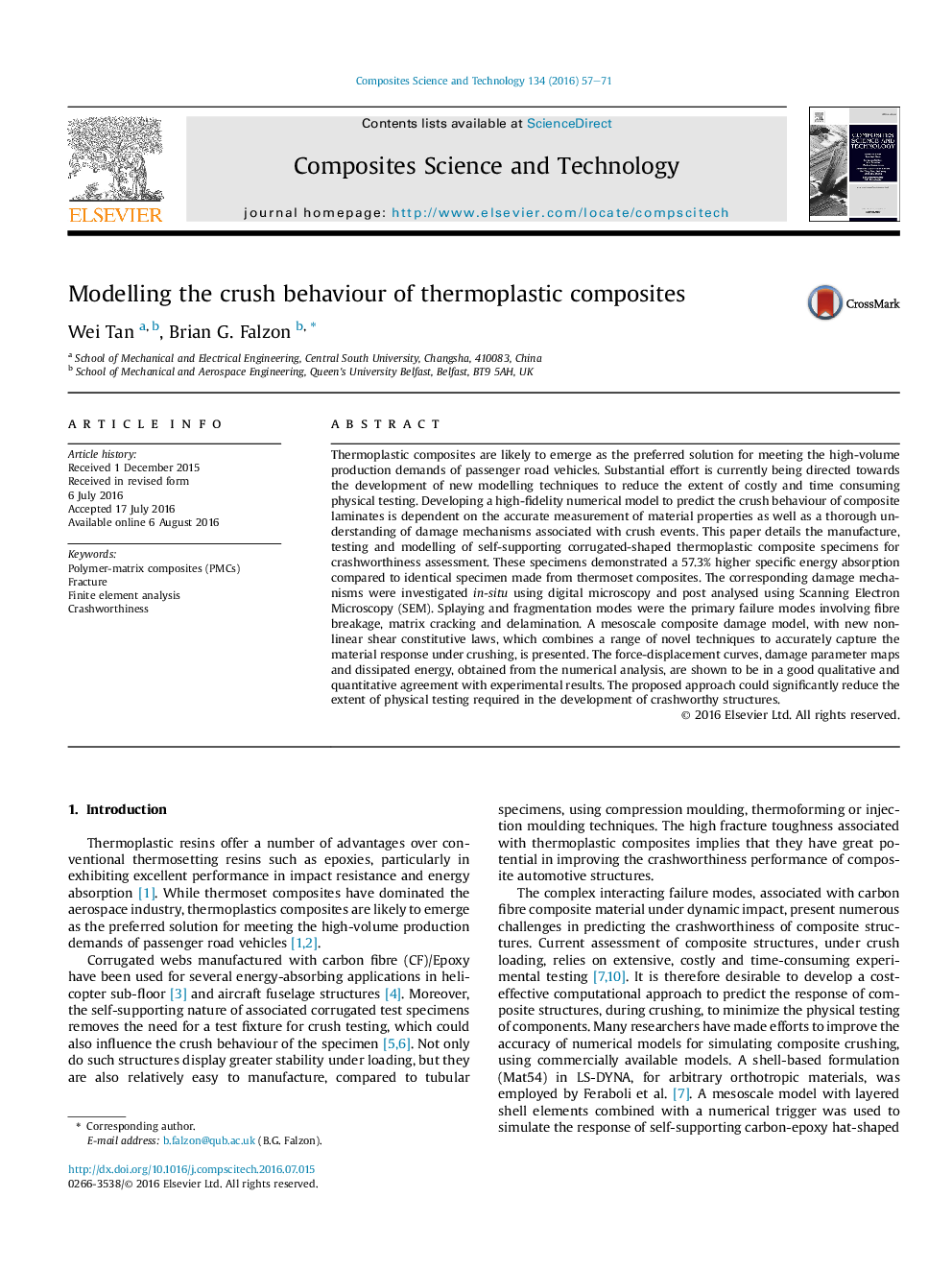| Article ID | Journal | Published Year | Pages | File Type |
|---|---|---|---|---|
| 7215092 | Composites Science and Technology | 2016 | 15 Pages |
Abstract
Thermoplastic composites are likely to emerge as the preferred solution for meeting the high-volume production demands of passenger road vehicles. Substantial effort is currently being directed towards the development of new modelling techniques to reduce the extent of costly and time consuming physical testing. Developing a high-fidelity numerical model to predict the crush behaviour of composite laminates is dependent on the accurate measurement of material properties as well as a thorough understanding of damage mechanisms associated with crush events. This paper details the manufacture, testing and modelling of self-supporting corrugated-shaped thermoplastic composite specimens for crashworthiness assessment. These specimens demonstrated a 57.3% higher specific energy absorption compared to identical specimen made from thermoset composites. The corresponding damage mechanisms were investigated in-situ using digital microscopy and post analysed using Scanning Electron Microscopy (SEM). Splaying and fragmentation modes were the primary failure modes involving fibre breakage, matrix cracking and delamination. A mesoscale composite damage model, with new non-linear shear constitutive laws, which combines a range of novel techniques to accurately capture the material response under crushing, is presented. The force-displacement curves, damage parameter maps and dissipated energy, obtained from the numerical analysis, are shown to be in a good qualitative and quantitative agreement with experimental results. The proposed approach could significantly reduce the extent of physical testing required in the development of crashworthy structures.
Related Topics
Physical Sciences and Engineering
Engineering
Engineering (General)
Authors
Wei Tan, Brian G. Falzon,
